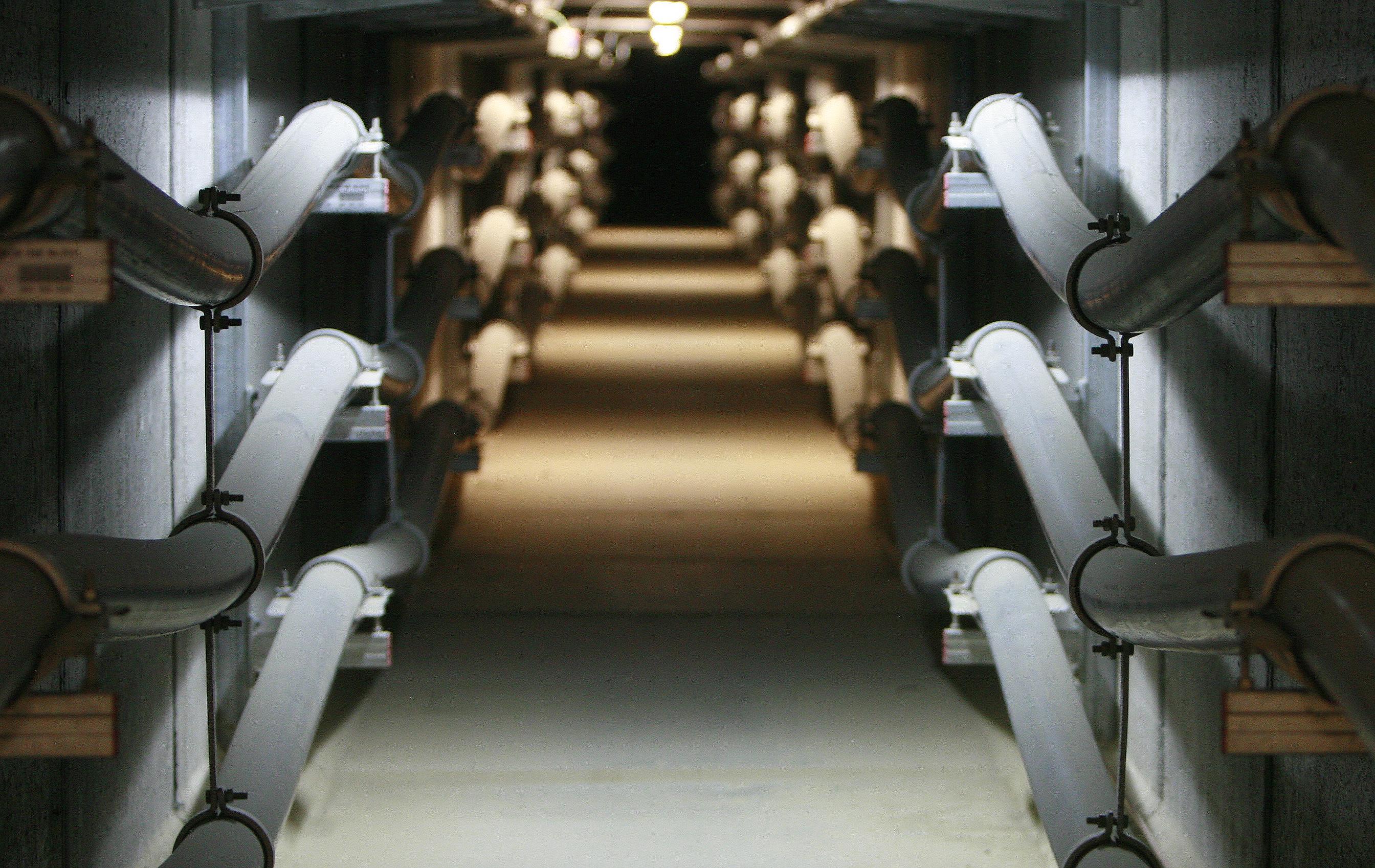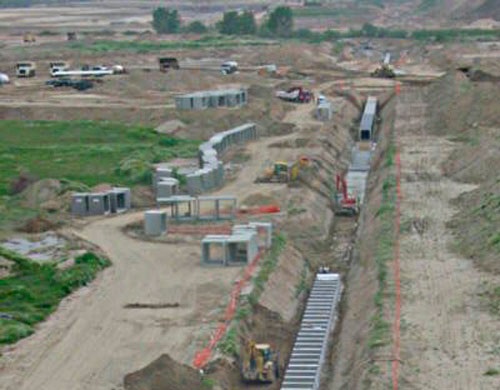For 40 years, we've been driving our country's economic and social progress. Four decades shaping Spain.
Barajas Project
Barajas Project
First underground 400 kV line in Spain and with international recognition.

A pioneering project
The partial burying of the San Sebastián de los Reyes-Loeches-Morata line (part of the Madrid Electricity Ring), known as the "Barajas Project", is the first 400 kV line to be built in Spain and an internationally recognised project. It facilitated the expansion of Madrid airport, given that part of the route of the existing double-circuit overhead line ran very close to the new T-4 runways, which were under construction at the time.
The line was buried in a record time of 18 months, ending in February 2004 with the commissioning of this new underground route of more than 12 km in length, laid out in the form of a gallery to facilitate the maintenance and supervision of an infrastructure of great importance in the supply of the capital's distribution substations. It was an innovative project in Spain and had similar characteristics to the only two existing at the time in Europe, in Copenhagen (Denmark) and Berlin (Germany).
Technical characteristics

This action entailed the dismantling of 31 overhead line towers and, thanks to the meticulous environmental and archaeological studies carried out, achieved a significant reduction in the environmental impact on the hydrology, vegetation, birdlife and landscape of the area. The course of the Jarama river was not affected, as the new route crosses it through a micro-tunnel under the plant bed and at a depth of five metres to avoid impacting runoff.
The gallery through which the cables run includes 5 ventilation stations as well as an integrated temperature control system using fibre optics as a temperature sensor distributed along the length of the gallery.
Technical video
In 2002, work began on the expansion of Madrid-Barajas airport: the new T-4 terminal and two new runways. These infrastructures were affected because part of the 400 kV line (San Sebastián de los Reyes-Loeches-Morata double circuit ) ran very close to the new tracks under construction. Aena asked Red Eléctrica for a solution to this problem and the decision was made to bury a 12.7 km section of this line, which is of great importance in supplying the capital's distribution substations.
Find out about other projects












